Co-founder of mega-popular bass amp and speaker cabinet company tells FBPO the whole story behind Hartke Systems
Exclusive interview with FBPO’s Jon Liebman
Top photo, L-R: Larry Hartke, Jon Liebman, Jack Bruce
December 27, 2010
Larry Hartke is co-founder of Hartke Systems, manufacturers of bass guitar amplifiers and speaker cabinets.
FBPO: What kind of musical upbringing did you have? Can I assume you started out as a player?
LH: I always loved music and in the early ’60s my transistor radio was my best friend. Listening to Top 40 radio stations in New York in the ’60s was a very exciting thing. There were so many great songs and groups on the radio, and they repeated the songs so often that you got to know them in detail. Then around 1964 there came the Beatles and the British Invasion and that just kicked things right over the top. You had no choice, like it or not, you had to be a Beatle. Pick one: John, Paul, George or Ringo. It was just a matter of what instrument you wanted to play. At the time I wanted to be George, so I bought a Zim-Gar guitar (I couldn’t afford a Gretsch) and took about three lessons.
When Jack Bruce and Cream showed up around 1967, it was time to get a bass guitar. I wore out many copies of Fresh Cream and Disraeli Gears back in the day. It was definitely Jack Bruce who got me interested in all things bass. I played all those Cream and Hendrix songs in a band in junior high and high school. It’s great how it worked out that Jack’s been a friend for years and has been playing Hartke for over twenty years now. Jack was in New York last August and I did an hour-long video interview with him at Hartke’s 48th Street Bass Lounge.
FBPO: How did you get involved in the technical, electronics side of things?
LH: It was after graduating High School in 1971 that I heard about an audio engineer in the neighboring town of Glen Ridge, New Jersey, who was looking for help in his electronics laboratory. I needed a job, so I went to see him. That is when I first met the renowned A. Stewart Hegeman.
In the early ’50s, the concept of home High Fidelity was born. People became interested in hearing the full sound that they heard at live performances and in the concert hall at home. The radios and record players of the time had low-powered 10- and 15-watt amplifiers with limited frequency range speakers and poor playback quality. A handful of engineers were working hard to change all that. Multi-speaker systems, high-powered amplifiers, better recording techniques, etc., were all being experimented with. Guys like Edgar Villchur at Acoustic Research, Henry Kloss at KLH and Stewart Hegeman at Harmon Kardon were pushing the engineering envelope during what is now referred to as the Golden Age of Hi-Fi. Stewart Hegeman was the architect of many audio engineering breakthroughs and designed many classic products of the era. His knowledge of electronics, amplifiers and speakers was recognized worldwide. It was there that I became addicted to Hi-Fidelity and Hi-Fidelity audio equipment.
Stewart was in his early seventies when I went to work for him. I practically lived there from that day forward. I would go there seven days a week to work with Stewart for the better part of the decade. I loved that job! I became Stewart’s right-hand man, his apprentice. We experimented with all kinds of speaker system configurations and cone materials, as well as preamp and amplifier designs. This is where the original aluminum coned woofers were conceived. I would spend all day making experimental drivers and loading them into cabinets. Then we would then set them up in his listening room and evaluate them.
Electronic speaker measurement was not what it is today so you had to rely more on your ears. The ear training I got there was an education that I could have gotten nowhere else and it has served me well to this day. Speaker measurements, even with today’s sophisticated computerized test equipment, still can’t tell you what a trained ear can. Ears remain the best test equipment of all!
FBPO: How did the Hartke company come about?
LH: During my time at Hegeman Laboratories, I was still playing around with the bass guitar at home and I was playing through a stack of eight Hegeman speaker cabinets. My Ampeg, Acoustic and Sunn amplifiers just weren’t as clear. They sounded muddy. I used Hi-Fi preamps and power amplifiers to drive the Hegemans for my bass guitar.
After leaving Hegeman Laboratories I worked at recording studios doing tape deck maintenance for Ampex while planning to start my own company with the intention of manufacturing home Hi-Fi and studio monitors with aluminum coned speakers. I reunited with my high school bandmate Ron Lorman, who had worked with me at Hegeman Laboratories and Nine West Studios, and we formed Hartke Systems. Ron had moved on to become a live sound engineer and was at the time stage managing and engineering all the shows at the Bottom Line Club in New York.
It was around 1980 when the first Hartke products were produced. We released an aluminum cone free edge tweeter “add-on” module and a two-way bookshelf system with an eight-inch aluminum cone woofer and a dome tweeter for home use. Later we added a two-way system with a ten-inch aluminum cone woofer. They were great-sounding little bookshelf systems. Esoteric Hi-Fi shops were opening around the country and we got dealers around the country to carry them.
FBPO: When people think of Hartke, they generally refer to the unique aluminum coned speakers. Without getting too technical, how are theses speakers different from, well, all the rest?
LH: Aluminum cones transmit sound three and-a-half times quicker than paper. That’s physics. Simply put, the signal gets through the aluminum cones quicker and more intact so there is less coloration, meaning less distortion, than with a paper cone. Paper cones color the sound more than aluminum cones. The aluminum cones are also a more rigid piston than a paper cone and they provide a real solid low end. The aluminum cones have a wider, cleaner frequency range than paper cones do, top to bottom. We make and sell plenty of aluminum cone, paper cone, and now our hybrid half paper/half aluminum cone HyDrive bass speakers. Different players like different things from their amplification so we make all flavors: vintage, modern and in between.
FBPO: Tell me about your experience working with Jaco Pastorius.
LH: In 1984, my partner Ron was engineering for Miles Davis live and in the studio and we were smack dab in the middle of the jazz scene in New York. Marcus Miller, Darryl Jones, Jaco Pastorius and so many great players were there at the time. We took Jaco’s road manager’s 810 Ampeg cabinet – we weren’t making large cabinets at the time – and I machined the dies for the first bass speaker cones. We made just one 810 bass cabinet, which was shared by a lot of the players on the scene. Jaco flipped when he tried out the new cabinet and never looked back. Because of the aluminum cones, the cabinet had a more solid, coherent low end than any other bass cabinet. In addition, the aluminum provided for an extended frequency range with more mids and highs than a paper cone speaker was capable of producing.
Jaco used the cabinet at all his shows and the buzz started to get out. Everybody wanted this new, quicker, clearer bass sound. We got tired of lugging this very heavy 810 cabinet around so we designed and built some 410s for ease of transportation. At this time we also ported the cabinets to further extend the bass response. Artists were calling up left and right to buy our early 410s. That first Hartke/Jaco 810 now resides in the window at Hartke’s 48th Street Bass Lounge in New York. Jaco was a great talent, a great guy and a friend. He really got Hartke moving from zero to sixty by playing our cabinets.
FBPO: Nowadays, Hartke speakers and amps seem to be just about everywhere. Can you identify a tipping point when things really started taking off for your company?
LH: Well, it all started with quite a bang in 1984 with Jaco and it’s been a pretty steady solid build all these years since. When we moved our distribution from Guild Guitars to Samson Technologies in 1986, we expanded all over the world and that was a whole new dimension for us. Today we have dealers in almost every country on earth, but I don’t spend much time thinking about it all. We just keep moving forward.
FBPO: How would you describe your approach to marketing? Some might say it’s a little unconventional.
LH: I’ve never been a “corporate” guy and I’m living this Hartke thing 24/7/365. It has to be fun or life would be miserable. This isn’t rocket science; its instrument amplification, so I do my best to make sure it’s fun for me and everybody else. I think our marketing reflects that attitude.
FBPO: What were you thinking when you published your cell phone number?
LH: I wanted to talk to a lot of bass players and I didn’t have their numbers. So I gave them mine! Nobody knew what would happen and it was a life-changing experience. It started out at 170 calls a day, which was pretty daunting, but what would have been worse is if nobody called.
FBPO: How did the actual response compare to what you expected?
LH: The response was over the top, way more than anyone expected. The first year I spent eighteen forty-hour weeks on the phone, and it’s over 20,000 calls so far. My wife had to do all the driving and you didn’t want to have dinner or watch a movie with me. But I made a lot of friends and got an education from bass players around the world. It was the best thing I ever did and it continues today. My number’s 201-680-8153.
FBPO: What’s next for Hartke?
LH: New products, new artists and more fun! We are always working on new gear and we will be releasing our new 1,000-watt Kilo bass amplifier at the NAMM show in January. In 2011 our Hartke artists will be hosting the largest number of Hartke clinics ever, all around the world. Victor Wooten, Billy Sheehan, Nate Watts, Stu Hamm, J.D. DeServio, and David Ellefson will all be out there for Hartke. And I’ll be out there too, on Facebook, the bass forums, the cell, wherever I can help!
FBPO: Tell me a little something about Larry Hartke, the man. What do you like to do when you’re away from music and the business?
LH: Life is pretty much wrapped around my world of music and business. I’m not away from it very much, but that’s by choice. It’s where I’m happiest. When I do step back, I hang out with my family and friends, mess around with my guitars and basses and work on my cars in the yard on nice warm days.
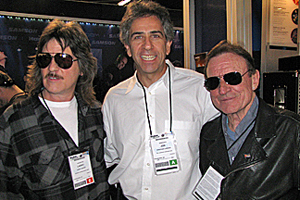

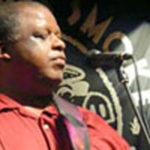
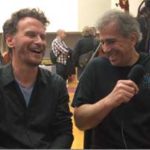
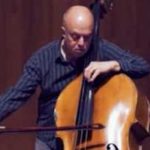
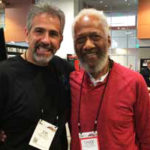
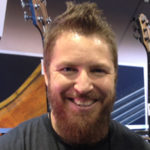
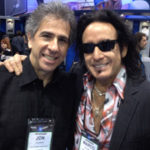
I was wondering when the 3500 bass amp first came out.
I’ve got two of them, one made in ROK and the othe made in China.
I just retubed them and will be using one of them on my next gig.
I got my first one back in the early 1990’s.